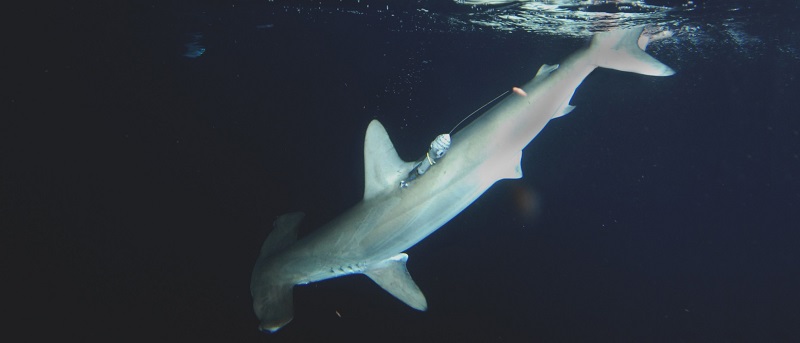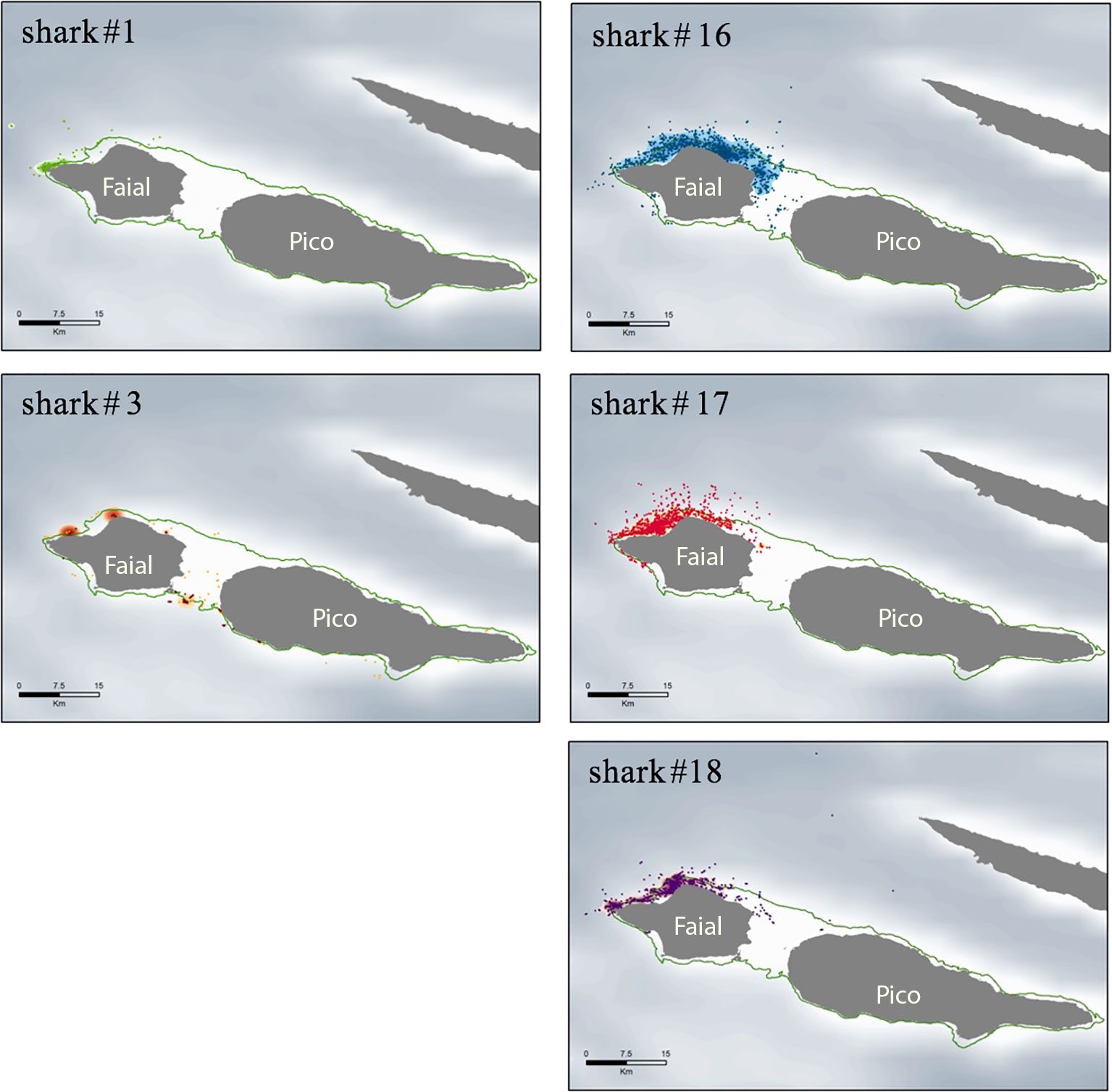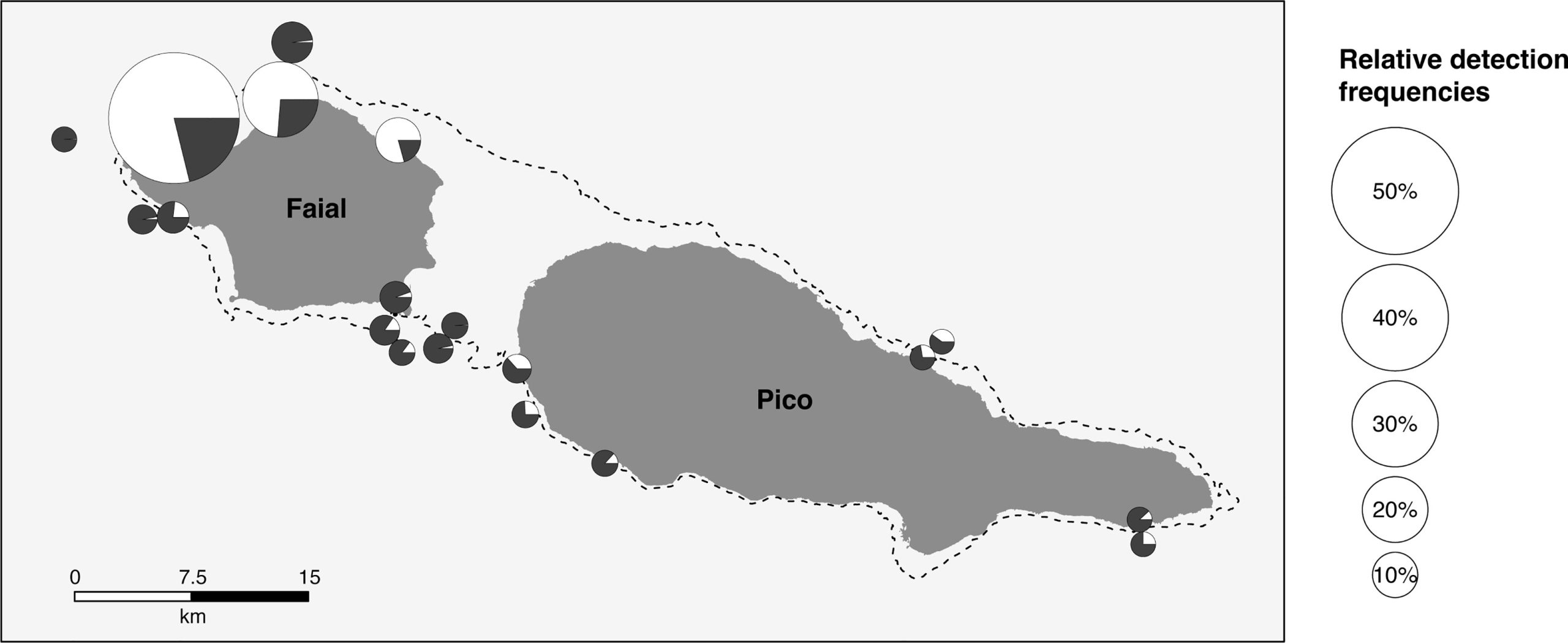← Back
Do Juvenile Smooth Hammerhead sharks have a nursery in the Azores?

Smooth hammerhead sharks are a threatened species of shark – as most shark species. Locating their essential habitats, like the nurseries could make a difference in their protection. Argos can help by tracking juveniles.
Sharks are among the most threatened marine species, as they are frequently by-caught in the industrial longline and purse seine oceanic fisheries in sub-tropical regions, or objects of fishing themselves. Some of them are also at the top of the food chain, , and thus threatened by lower levels’ vulnerabilities.
Smooth hammerhead sharks (Sphyrna zygaena) are thought to be born in coastal nurseries in the Azores, renowned for being a hotspot of biodiversity (see also A nursery for juvenile reef manta rays). There, they grow until they are large enough to become oceanic. This species is Red-listed as Vulnerable to extinction by the International Union for Conservation of Nature (IUCN). However, the locations of the essential fish habitats, including nurseries, of smooth hammerhead sharks are still very uncertain.
Tracking juvenile smooth hammerhead sharks in the Azores
To understand if there are juvenile nursery areas stably located in the Azores, and if those are distinct from adult habitats, a study was conducted between 2010 and 2020 along the north coast of Faial Island (and close-by neighboring island of Pico).
A total of 18 juvenile smooth hammerhead sharks were tagged, using various tag combinations. One or more of the three types of tags was used on each individual: position-only transmitting satellite tag, archival pop-up satellite tag, and passive acoustic tag. Each type had its own objective: studying large-scale movements, the vertical behavior with environmental data (temperature), and the local horizontal movements and habitat (depending on acoustic receiver locations around the islands). All these are for periods ranging from one to four years depending on the tag and its programming.
Nine individuals with multiple acoustic detection were kept for the spatial analysis.
More info about animal tracking with Argos
Analysis of the data from the tags
The nine sharks moved widely over the common shelf of Faial & Pico, staying rather close to the coasts, even if the position-only transmitting satellite tags showed occasional moves offshore, out of the acoustic receivers’ detection ranges. They were detected at between 0 to 20 stations over nearly three-year period (for the eight long-lasting transmitters) and eventually roaming around the shelf. The pop-up archival tags showing that those sharks never dove into mesopelagic or deep-sea depths.

Positions for five smooth hammerhead sharks tagged with real-time satellite positioning tags (SPOT) around Faial and Pico islands; the one on the left column are double-tagged sharks (satellite positioning and acoustic tags). Shaded areas denote the kernel utilization distribution (KUD) home ranges. (from [Afonso et al., 2022])
Differences in location around the islands were noticed depending on day or night, and also on seasons. Sharks were often detected by day closer to the coasts, and most often along the north shore of Faial. They moved offshore, around the island shelf break, during the nights.

Detection frequencies at the difference acoustic receivers per diel phase (white for daytime, black for nighttime) for nine smooth hammerhead sharks. Node size is proportional to the average of relative detection frequencies; the dashed line marks the edge of the island shelf. (from [Afonso et al., 2022])
Faial-Pico nursery for smooth hammerhead sharks
Juvenile smooth hammerhead shark seems to be full-time residents of the shelves and upper slope of the islands of Faial and Pico, until they reach a certain age. During their first year of life, they show seasonal high residency and annual site fidelity, which are part of the definition of an elasmobranch nursery. This may be because those coastal habitats offer more feeding opportunities and/or less predation opportunities from deepwater sharks or other predators. The fact they aggregate could also be a defense against predation.
These nurseries may constitute essential fish habitat for this species. In this case, they should be included in spatial management measures at the local and regional scales. Especially since they may also play a greater role for the north Atlantic smooth hammerhead shark populations in its globality.
Reference
Afonso P, Gandra M, Grac¸a G, Macena B, Vandeperre F and Fontes J (2022) The Multi-Annual Residency of Juvenile Smooth Hammerhead Shark in an Oceanic Island Nursery. Front. Mar. Sci. 9:844893. doi: https://doi.org/10.3389/fmars.2022.844893
Main Photo: a smooth hammerhead shark with an Argos-transmitted pop-up archival tag (credit J. Fontes ImagDOP/Okeanos)

